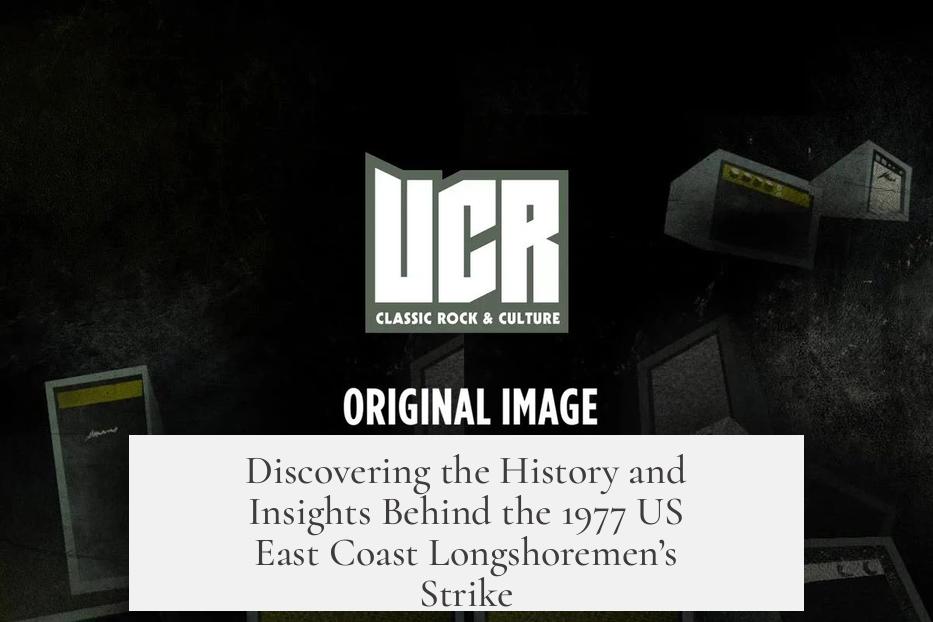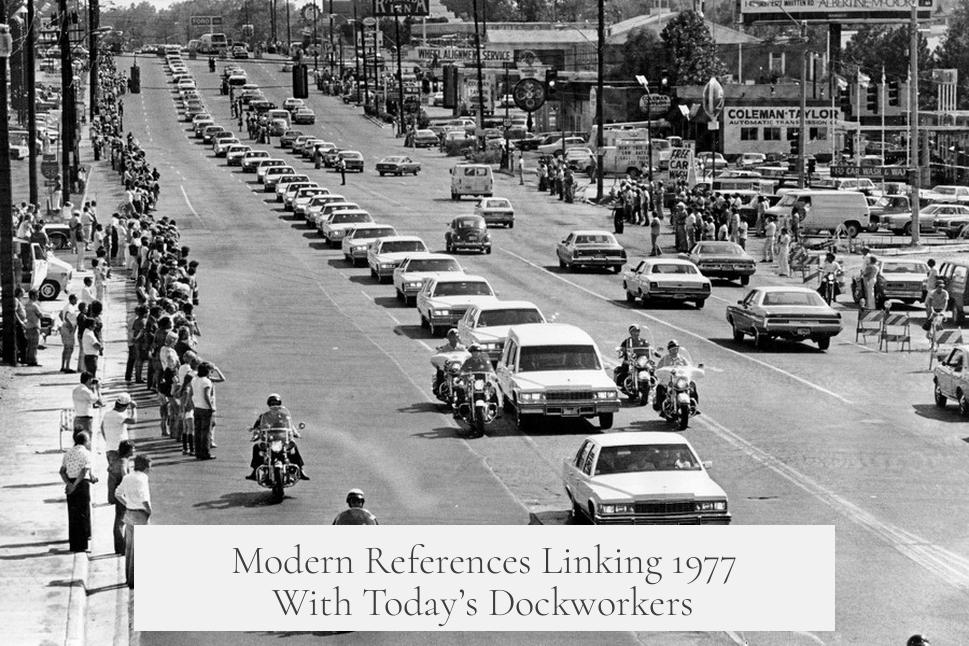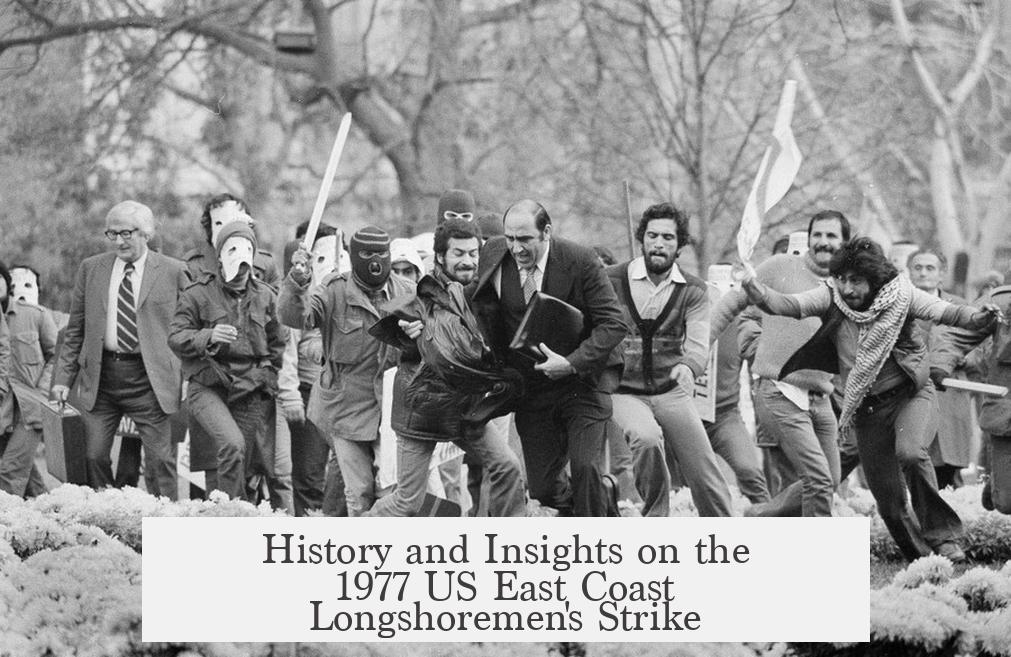The 1977 US East Coast Longshoremen’s strike stands as a significant labor event, lasting 12 days and impacting seven major shipping lines along the East Coast. This strike involved longshoremen, often represented by unions such as the International Longshore and Warehouse Union (ILWU), who protested for better working conditions and wages amid growing tensions with shipping companies.
Primary sources for detailed insights on the strike are available through the ILWU’s official channels. The ILWU maintains a History section offering books and videos. These materials include first-hand accounts and union perspectives on significant events, including the 1977 strike. Researchers and students can find valuable narratives and documentation here.
Contemporary news coverage provides context and factual reporting from the time. The New York Times article dated April 14, 1977, details the onset of the strike, highlighting its scale and impact on major shipping operations. The article covers the reasons behind the strike and its effects on trade and port activity.
Modern-day references help place the 1977 strike within a broader historical framework of labor actions affecting the US East Coast docks. A recent CBS News article on potential dockworker strikes mentions the 1977 event as the last major labor strike on the East Coast docks, emphasizing its 12-day duration. This modern reference provides a timeframe and context for labor relations history on the East Coast.
Key elements of the 1977 strike include:
- Duration: 12 days
- Geographic Scope: East Coast, impacting seven major shipping lines
- Participation: East Coast longshoremen, primarily unionized workers
- Union Involvement: International Longshore and Warehouse Union (ILWU) as a primary representative body
- Negotiation Focus: Working conditions, wages, and labor contracts
Researchers aiming to study the strike can utilize the above sources for primary documentation and historical analysis. Direct union resources and archive newspaper articles provide factual and contemporary perspectives. Recent news stories can also guide inquiries towards updated interpretations of the strike’s significance.
- The 1977 strike lasted 12 days and involved multiple major shipping lines on the East Coast.
- ILWU resources offer firsthand accounts and union perspectives on the strike.
- Contemporary news archives like the New York Times provide detailed time-specific coverage.
- Modern references frame the strike within ongoing labor relations in the shipping industry.
Discovering the History and Insights Behind the 1977 US East Coast Longshoremen’s Strike

If you’re looking for the history of the 1977 US East Coast Longshoremen’s strike, here’s the essential scoop: it was a significant labor action involving dockworkers who halted work across seven major shipping lines for 12 days. This strike marked a critical chapter in the ongoing struggle for fair wages and working conditions on the East Coast docks. But grabbing the full story takes digging through some intriguing sources and archives. Let’s unpack what you should know and where to look.
Why does this strike still matter? It was one of the last major East Coast dock strikes, shaping labor negotiations and influencing union strength in a vital part of the American economy. If you visualize ports buzzing but then coming to a quiet stop—yep, that’s the power play of those longshoremen.
Start With the Source: ILWU’s Own Historical Archives
Your first treasure trove should be the International Longshore and Warehouse Union (ILWU) historical materials. They offer books and videos rich with firsthand accounts from union members who lived through the strike.
Imagine hearing the story straight from the workers’ mouths — the frustrations, negotiations, and pivotal moments. These primary sources provide a colorful, authentic perspective you won’t find in dry summaries.
Though the ILWU is West Coast-centered, their materials touch on broader union efforts, including East Coast struggles, making their accounts relevant and valuable. So, bookmark their history section—it’s like a time capsule of passion and persistence.
Dig Into the 1977 New York Times Coverage
Contemporary news articles are gold when piecing together timelines and public sentiment. The NYTimes archive from April 14, 1977 covers the strike’s kickoff against seven major shipping lines.
This piece delivers key info on which shipping companies were impacted, the workers’ demands, and the strike’s immediate impact on port activity. It’s like reading the day’s headlines from the workers’ perspective—providing context that enriches any deep dive report or research paper.
Reading period news also shows the public’s reaction and government response—often a critical ingredient for understanding why the strike only lasted 12 days.
Modern References Linking 1977 With Today’s Dockworkers

Surprisingly, finding detailed analyses of the 1977 strike beyond contemporary reports is tricky. However, a recent CBS News article references the 1977 strike as the last major East Coast dock strike, stating it lasted 12 days.
Though brief, this modern article links past and present, showcasing how labor tensions remain relevant over four decades later. It hints at continuity and change in union power and labor disputes.
If you want more, you might reach out to the reporter. Journalists often have access to archived sources or interviews that didn’t make the article. This could open up new leads for your research.
What Makes the 1977 Strike Unique and Research-Worthy?
First, this strike highlights the economic importance of East Coast ports during a turbulent era. Shippers and workers clashed over wages and working conditions amid rising inflation and changing global trade.
Second, the strike’s relatively short length (12 days) is curious. Was this a show of strong union leverage, quick government mediation, or corporate concession? Uncovering detailed negotiation tactics could offer lessons for modern labor disputes.
Third, the longshoremen’s strike was about more than money. It was a battle to maintain dignity, job security, and a voice in an evolving maritime industry. Their resilience laid groundwork for later union strategies.
Tips for Writing a Paper or Deep Dive on the 1977 Longshoremen’s Strike
- Consult Primary Sources: Start with ILWU’s oral histories and union documents. These give vivid, lived experiences that textbooks miss.
- Explore Newspaper Archives: Use the New York Times and other 1977 publications to reconstruct daily developments and public opinion.
- Compare Past and Present: Look at modern news stories like CBS News to understand how this strike’s legacy shapes current dockworker relations.
- Interview Experts: Reach out to labor historians or union contacts who might offer unpublished insights or direct you to lesser-known resources.
- Analyze Strike Duration and Impact: Evaluate what a 12-day strike meant economically and socially compared to longer or shorter disputes.
Wrapping Up: Why This Research Could Be Your Next Big Idea
The 1977 East Coast Longshoremen strike is a goldmine for anyone fascinated by labor history, maritime commerce, or social justice movements. With the right sources, you can craft a compelling narrative that goes beyond “strike happened” to reveal human stories and economic shifts.
What if your paper could highlight how workers today might learn from 1977’s lessons? What about exploring how the union’s tactics foreshadow modern labor negotiations? There’s plenty of room for fresh angles.
So, if you want to understand the heartbeat behind that 12-day pause on the docks, dive into ILWU archives, the NYTimes treasure trove, and reach out to living voices today. This isn’t just history—it’s a living story echoing into the docks and labor fields of now.




